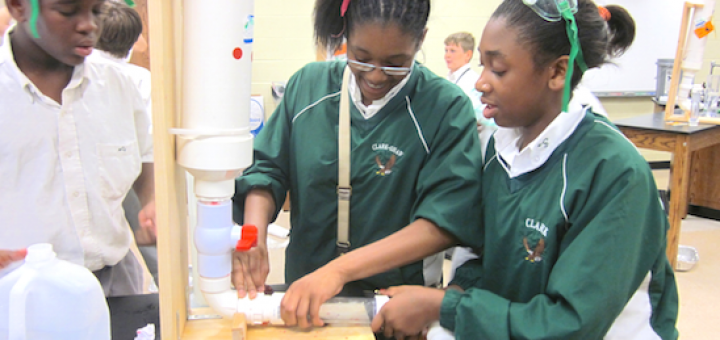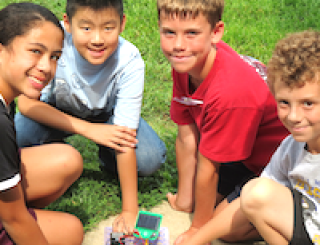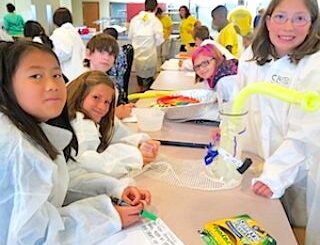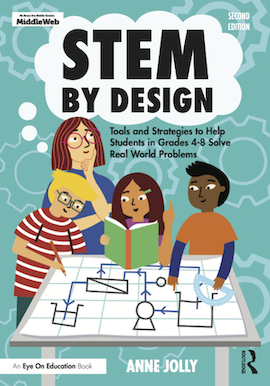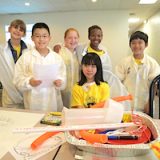Designing a STEM Project
I’m guessing that the thoughts currently running around in your head include these: What does designing STEM projects and lessons involve? How do I organize to successfully teach STEM? Some practical tips if you please!
Let’s start here: Aside from our STEM design criteria, you need to consider a number of pragmatic issues when designing a solid lesson. You’re going to need basic information about your students, effective STEM teaching practices, available resources, and more. Use these questions to help you think through issues you need to consider as you design your project.
1. What students will I be teaching during this project?
One essential STEM criterion recommends that STEM projects include all students, regardless of background, ability, gender, ethnicity, and those with disabilities. In designing a STEM project, make sure you plan for the needs and learning styles of students from diverse backgrounds and cultures. These students bring a variety of perspectives to the team, more original ideas and creative solutions emerge, and more students develop valuable life skills.
2. What science and math content will students apply during the project?
Take a look at both the science and math standards the students you teach are expected to meet this year. Obviously some of these lend themselves better to STEM lessons than others, and some are more important for kids to master than others. During their STEM project, students should develop a real, hands-on understanding of underlying principles rather than just knowing facts and calculations.
3. How can I best lead this STEM project?
When designing a STEM lesson, you must consider how kids are going to learn and how you will guide that learning. STEM classes involve students in hands-on exploration and critical thinking. When I think about how to teach STEM, the winning answer is project-based learning (PBL), hands-down! This teaching approach also prepares students with the skills and mindset they need for future challenges and work.
4. How will my students organize and manage their work?
My own student teams looked stumped when they discovered they were on their own solving their STEM challenge. How would they get started? What did they have to do to get the job done? They needed a method to help them find a workable solution. Engineers face the same dilemma, so they use an engineering design process (EDP) to guide them in finding solutions for problems. Your students will use that same process to guide their thinking and keep them on track.
5. What challenge or problem will my students address?
Remember that STEM involves students in addressing complex, relevant, real-world challenges. You want the challenge to be meaningful and interesting for your students. Instead of choosing a problem yourself, think of how you can involve your students in coming up with ideas. When asking students to choose a challenge, be sure they select a problem that’s doable, involves creating and testing a prototype, and uses technology. I sometimes settle on a happy medium and provide them with a list of possible problems they can choose from. In that way I can guide them to focus on needed math and science content and to choose a challenge for which they have materials and resources.
6. What prior knowledge and know-how will my students need to do the work?
When working on a STEM project, students want to succeed. Their success is closely tied to the skills and understanding they bring to their work. Before beginning the project, be sure to determine what knowledge and know-how your students will need to successfully do this specific work. My students often needed refreshers in some areas such as the math and science content; the EDP; how to construct, accurately test, or evaluate their prototypes, and so on. They may also need help with teaming tips. You will doubtless identify other areas as you decide on your project.
7. What is the role of criteria and constraints in STEM projects?
STEM lessons spell out criteria and constraints that students must meet when designing solutions for a specific problem. Simply put, criteria identify the ways students will define success for their prototypes and inventions. What will the device or prototype need to accomplish to solve (or to simulate a successful solution for) the problem?
Constraints refer to limitations students must observe when designing their solution. Depending on the type of prototype they are designing, they may need to limit the size or weight of the device. They may need to consider safety factors and environmental impact. One thing they will probably always have as a constraint is the availability of materials to work with.
8. How will I involve students in productive collaboration and teamwork?
STEM projects engage students in collaboration and teamwork to design and create solutions. You undoubtedly have students who prefer to work alone, but in the real world, people work together to solve problems. For a team to be successful, everyone must be actively involved. As you plan and design STEM lessons and projects, plan for all project activities to involve teamwork, discussion, and peer learning. For students, working in successful teams builds friendships, leadership skills, and better decision-making.
9. What interpersonal (life) and leadership skills will this project address?
In a nutshell, life skills are the skills that help us work well with others. We use these skills to communicate, solve problems, be a part of a team, and move forward. Life skills include personal qualities, personality traits, social cues, and communication skills students need to succeed in their daily work, personal lives, and relationships. Unlike hard skills, which focus on specific skill sets needed to perform specific tasks, life skills apply across all jobs and in all industries. We often refer to them as “people skills.”
10. What technology will be necessary for solving the challenge?
For your students today, technology literacy is not optional. Understanding how to use current technology is fundamental to their future life and work. So be sure all your STEM projects include technology. And remember – not just any technology will do. Technology is not an “add on” – it must be an integral part of their project work. Work with the technology teacher, district IT staff or a colleague to identify and integrate appropriate digital technology to meet the project goals.
11. How will I provide helpful assessment and feedback?
An important part of planning and leading STEM projects is figuring out what your students are learning as they work. Likewise, kids need to know how they are doing and where to go next. You can build your students’ self-efficacy and give them the support they need by providing reassuring and useful feedback that removes the fear of failure. In your STEM project, include assessments to guide and encourage students and point out how they can improve – not to cause them to feel a lack of success.
You’ll find more discussion of these issues in Chapter 4 of STEM by Design. Remember that when you teach STEM, you can’t always start out where you one day hope to end up. You may be short on resources and time to teach STEM the way you’d like. Just get off to as good a start as possible and work toward your end goals.
Text from Chapter 4 of STEM by Design by Anne Jolly (Routledge 2025). All Rights Reserved.

